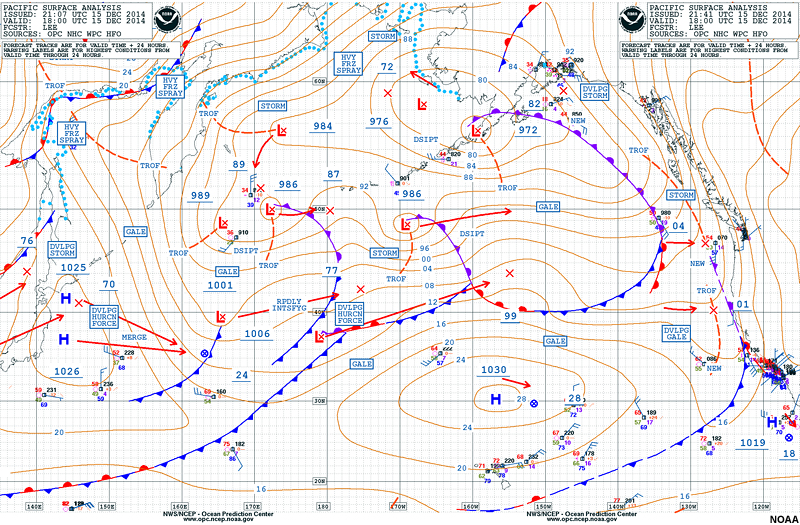Introduction » What is a Front?

Although fronts are a ubiquitous feature on surface weather charts both for hydrometeorologist professionals and the public alike, there is still not a universally accepted definition of what constitutes a front, especially where analysis of fronts on charts is concerned.
Some meteorologists and researchers have argued for a specific threshold to define a front, such as 8°C/220km being a “strong” synoptic-scale front or a minimum of 6°C/500km, while others have espoused the less specific definitions that entail a synoptic front being an interface and/or transition zone between airmasses of different density. Others have defined fronts as gradients or discontinuities in certain weather fields, like temperature or moisture, but not others, such as wind direction, and vice versa.
Herein we will examine both synoptic scale and mesoscale fronts, and treat them as weather features possessing the following qualities or characteristics:
A sharp gradient and/or discontinuity of a weather field, primarily temperature or potential temperature, that is generally attributable to airmass boundaries in and near systems that cause such airmasses to move on the order of at least several hours. Shallow, semipermanent thermal gradients that are locked in place by land-water or other topographic influences will generally be excluded in analyses here, except where they become ingested into the movement of a passing synoptic-scale or in rarer cases, mesoscale, system.
We will not attempt to explain the thermodynamic theory or dynamic theory of frontal types, frontogenesis, or frontolysis in detail here, but simply the analysis of their existence and placement on maps, as well as the diagnosis of their type.
Note: The remainder of this module contains interactive drawing tools that are optimized for google chrome, firefox and safari - internet explorer/edge users may want to switch browsers.